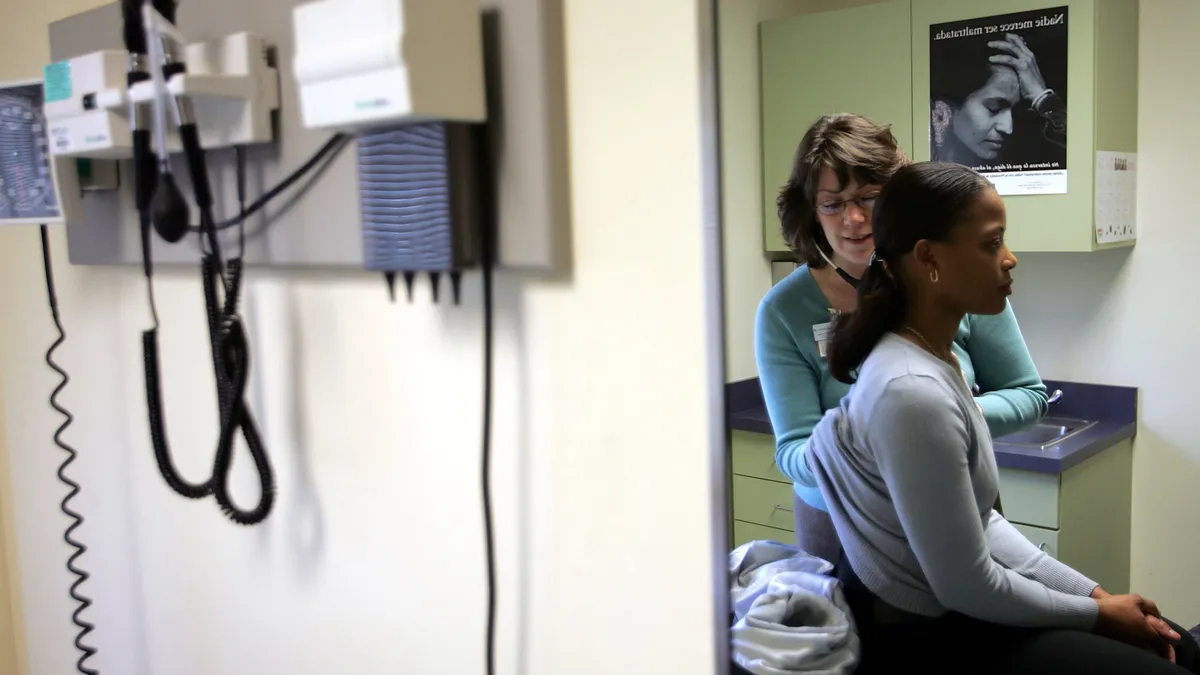Dive Brief:
- Cardiovascular disease is underdiagnosed and undertreated in women, and employers could make changes to their benefits programs that address risk factors, create more inclusive cultures and attract talent, the Northeast Business Group on Health said in an employer guide released Nov. 30.
- Statistics from the Centers for Disease Control and Prevention show heart disease was responsible for 1 in 5 female deaths in 2021, but only 56% of U.S. women recognized heart disease as a leading cause of death. Women may experience different symptoms of heart disease than men do, NEBGH said. Treatments for cardiovascular disease and its risk factors, such as diabetes and obesity, are underused.
- NEBGH recommended employers devise strategies for determining which benefits programs they are missing and work with their health plans to examine claims data. Other strategies include structuring benefits to ensure equity; take steps to reduce drug copayments; and educating employees on becoming better healthcare consumers.
Dive Insight:
U.S. medical care benefit costs are projected to increase by 8.9% in 2024, according to a recent WTW survey, and the organization found that the growing incidence of cardiovascular disease is one factor driving cost growth. As NEBGH’s guide notes, however, the disease affects people in various ways and can have many potential causes.
Women face sex-specific biological risk factors for cardiovascular disease, according to NEBGH, such as premature menopause, gestational diabetes and hypertensive disorders. Women with cardiovascular disease are more likely to report poorer patient experiences, lower health-related quality of life and poorer perception of their health than men, NEBGH said.
There are also psychosexual risk factors and other potential disease contributors ranging from abuse and intimate partner violence to socioeconomic deprivation. In 2022, a NEBGH report noted that employers’ healthcare investments may fail to address social determinants of health that play a role in disease prevention.
“Women are placing greater value on working for organizations that are committed to making sure that employees’ day-to-day experiences align with their personal values and promote wellbeing,” Candace Sherman, NEBGH’s CEO, said in a press release. “Providing programs designed to support women’s health and especially a healthy heart is an important part of efforts to create an inclusive culture.”
In addition to cardiovascular health, employers may consider other benefits areas that could address the specific health needs of women and other employee groups. One example is menopause care; sources previously told HR Dive that the lack of employee benefits focused on providing assistance to menopausal employees constitutes a gap in many employer-sponsored health plans.













